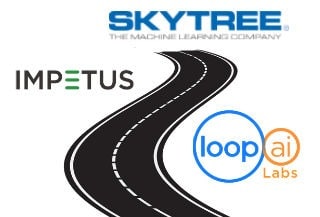
The firm announced three new machine learning-based capabilities that extend the existing functionality of its Life Science Analytics Cloud.
Data analytics company Saama Technologies, Inc. has rolled out three new machine learning-based capabilities that increase its Life Science analytics cloud functionality.
The suite integrates programs with artificial intelligence including Virtual Assistant/AI, Operational and Financial Risk Mitigation, and Drug Efficacy and Patient Safety Analytics.
See also: IoT security market to hit nearly $10B by 2025
“This trio of new LSAC proficiencies demonstrates Saama’s commitment to strategic, targeted and pragmatic deployment of AI to continually advance clinical operations,” says Malaikannan Sankarasubbu, Vice President of AI Research at Saama. “These exciting new features are the first in a series that will be launched throughout 2019 to exponentially enhance the value of our LSAC platform for Saama’s life science partners. These new features translate into clinical trial time and cost savings and, ultimately, safer and more effective drugs.”
Virtual Assistant/AI
Saama introduced its Deep Learning Intelligent Assistant in 2018. The domain and context-aware conversational assistant for LSAC can identify the intent of queries. This new Virtual Assistant functionality improves conversational user engagement. Now its replies factor in:
- Locations
- People
- Organizations
- Times
- Quantities
- Percentages
- Monetary values
The Deep Learning Intelligent Assistant can even remember the context of previous inquiries. These capabilities will lead to vast improvements in clinical operations insights, with queries about enrollment, financial risk and other key decision making factors included.
Operational and Financial Risk Mitigation
Same designed its new Operational and Financial Risk Mitigation to improve researchers’ abilities to track key clinical trial performance indicators used to manage and mitigate operational and financial risks. An auto-machine learning model improves decision making by enabling teams to go beyond planned and actual KPIs. Teams no longer need to run their own analyses, which reduces time and cost. LSAC applies the appropriate ML algorithms to historical data taken from various trial sites.
Drug Efficacy and Patient Safety Analytics
The company also enhanced its LSAC with a machine learning-based Drug Efficacy and Patient Safety analytics feature. This feature simplifies the process of correlating patient profiles with data variables. Now LSAC can analyze to 50 variables simultaneously. This function allows researchers to identify previously undetectable patient deviations and any corresponding safety issues. Saama estimates that this new functionality will yield approximately 30% savings in clinical trial staff time and effort.






























